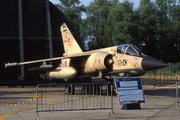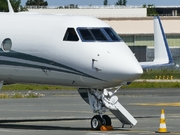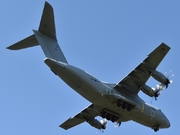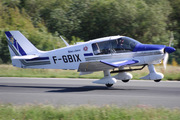Dépêches
Aerospace Industry to Be ‘Squeezed’ by Steep Ramp-up in Commercial and Continued Cuts in Defense, According to AlixPartners Study
Dépèche transmise le 8 juin 2011 par Business Wire

Aerospace Industry to Be ‘Squeezed’ by Steep Ramp-up in Commercial and Continued Cuts in Defense, According to AlixPartners Study
NEW YORK--(BUSINESS WIRE)--The aerospace and defense industry globally will be facing tough and contradictory burdens in the next few years, as the need to meet an anticipated 25% jump in commercial-aircraft deliveries by 2014 contrasts with further belt-tightening of nations’ defense budgets in the wake of widespread budget deficits – both of which could lead to severe supply-chain pressures. That’s according to a study released today by AlixPartners, the global business-advisory firm.
“To successfully navigate the paradoxical challenges ahead, the aerospace industry will have to change in ways it has never changed before.”
“While bruised, the aerospace and defense industry emerged from the economic downturn in better shape than most industries, due largely to increased demand in the defense sector, plus some petty vigilant cost-cutting overall,” said David Fitzpatrick, managing director at AlixPartners and co-leader of the firm’s Global Aerospace and Defense Practice. “However, the industry now faces the ‘big squeeze’ – the contradictory challenge of quickly ramping up production for expected growth in the commercial sector coupled with the need to address expected cuts and therefore a sharpened focus on affordability in the defense sector. And those squeezed the most will be the supply chain.”
Commercial Sector
According to the study, the near-term outlook for commercial aircraft is positive due largely to increasing air-traffic demand globally, which is expected to grow 5.5% by 2012 alone. Asia and the Middle East, says the study, will enjoy 35% of all demand increases over the long term. Rising fuel prices and the need for more-efficient aircraft are already causing heightened demand for new aircraft, per the study. It notes that this year, for the first year ever, commercial-aircraft deliveries globally are set to exceed 1,000 and that global aircraft production is expected to increase 30% to 50% over the next three years.
Increasing demand for commercial aircraft, however, does not come without its challenges, and the guide-path to meeting global demand will be bumpy. Original-equipment manufacturers (OEMs) will be forced to ramp up production while simultaneously trying to innovate and develop products to meet demand for more fuel-efficient aircraft. Suppliers – who largely decreased capacity after suffering through the recession – will also face capacity and talent-acquisition constraints as they try to meet demand, which could lead to severe quality issues, according to the AlixPartners study.
There is significant risk, says the study, that commercial-sector suppliers will not be able to keep up with aggressive new manufacturing demands and will be challenged by: capacity constraints of their own (Tier-2 and Tier-3) suppliers that have under-invested in capability development; specialty raw-materials shortages (e.g., carbon fiber and titanium fasteners); and ongoing supply-chain delays and shortages resulting from the disaster in Japan.
“The aerospace supply chain was basically decimated by the economic downturn, as even sold orders were put on hold or otherwise put in a lumpy, stop-and-go mode,” said David Wireman, director in AlixPartners’ Aerospace and Defense Practice. “From all indications, that supply chain is not at all prepared for steep commercial ramp-up curve that lies ahead, and production constraints are a very real possibility.”
Defense Sector
But while demand on the commercial-aircraft side looks strong, defense, globally, looks to be weakening. According to the study, U.S. defense spending is expected to decrease by at least 12.2% by 2013 and by 6.5% by 2016, while defense spending in Europe, already down 2.8% in 2010, is expected to continue to drop sharply in the coming years, led by the U.K.’s recent announcement of an 8% cut by 2015 and promised drops of up to 25% in smaller European nations.
As a result of these expected widespread cuts, says the study, defense priorities will shift toward extending the life of existing equipment, improving communication networks and investing more in weapons systems targeted at supporting today’s more asymmetric warfare. However, says the study, the scale of these new investments will not be enough to make up for cutbacks in major-platform investments such as the F-35 fighter aircraft series built jointly by Lockheed Martin Corp., BAE Systems PLC and Northrop Grumman Corp., which has already experienced significant cuts in planned production numbers. In response to these kinds of cutbacks, the larger defense companies will need to pursue a more diverse business mix that will lead to partnerships, M&A and consolidation among smaller players as larger companies pursue new markets, the study says.
In sum, the study shows that both the commercial-aviation and defense industries face critical challenges that they will need to address. Key economic challenges will come from federal budget uncertainties, volatile fuel prices and new entrants into the few growing sectors of the industry. In particular, the recent volatility of oil prices, coupled with continued sluggish economies in the West, has made it hard to predict future industry trends. These factors are leading many aerospace and defense manufacturers, especially lower-tier suppliers, to delay investments, says the study.
“The aerospace and defense industry faces a very challenging next few years,” said Fitzpatrick. “The simultaneous need for near flawless execution on the commercial side and belt-tightening on the defense side, plus the need to deal with supply-chain challenges across the board while also seizing M&A opportunities will push management capabilities to the extreme.”
M&A Outlook
Driven by supply-chain pressures in commercial and budget cuts in defense, the pace of mergers and acquisitions in the aerospace industry is expected to rebound in the next few years. In addition, it finds, low valuations today across the industry, with multiples generally below 10 times earnings before depreciation and taxes, have made deals look far more palatable.
On the defense side, the study suggests that smaller companies will be in play as larger players look to encroach on new markets and make strategic, “bolt-on” acquisitions.
“The larger companies will be looking at these smaller participants that have new technologies, new products or complementary systems that can be easily and profitably integrated,” said Wireman. “Across the industry, valuation multiples are down 45% since 2008. To us, that sounds like the makings of a ripe deal environment.”
Business Jets
According to the study, the global business-jet sector, which suffered a 38% decline in deliveries between 2008 and 2010, will see some degree of recovery but will not experience a significant upturn before 2012 – with expected a compound-annual-growth-rate (CAGR) increase of 17% between 2010 and 2012. Recovery in business jets is expected to be limited largely by an only slowly improving global economy. Demand, it finds, will also continue to suffer from a large pre-owned product overhang (about 14% of the total market) and due to lingering negative public perceptions and media scrutiny about the use of private jets in a time when unemployment remains high and layoffs continue.
MRO
After two years of lost growth, the maintenance, repair and operations (MRO) market is expected to recover by the end of 2012 with 3.7% annual growth, leading to an expected global value of $61 billion by 2020, says the study. MRO growth will be fuelled by the engine, components and modifications segments, and will be driven by demand in developing and emerging markets. North America and Europe, on the other hand, will experience smaller-scale growth of 0.7% to 1.6% CAGR, respectively.
Profitability
According to the study, overall profitability is up and earnings-before-income-taxes (EBIT) margins have now reached levels not seen since 2006. Moreover, the findings show that in 2010 European companies’ profitability, which historically lagged those of North America, now trails North American companies by just 1.0%.
“Achieving sustained profitability through greater efficiencies and greater innovation remains the name of the game in aerospace, and it’s a game OEMs, suppliers and owners, including private-equity firms, will all have a key role in going forward,” said Fitzpatrick. “To successfully navigate the paradoxical challenges ahead, the aerospace industry will have to change in ways it has never changed before.”
About AlixPartners
AlixPartners LLP is a global business-advisory firm offering comprehensive services in four major areas: enterprise improvement, turnaround and restructuring, financial-advisory services and information-management services. The firm has more than 900 professionals and 15 offices around the world, and can be found on the Web at www.alixpartners.com.
- 24/04Ibis Styles London Heathrow : l'hôtel géré par un passionné d'aviation pour les passionnés d'aviation (photos + vidéos)
- 23/04 SkyUp renouvelle son partenariat avec Wizz Air
- 23/04 Play : résultats de mars 2024
- 23/04 Les garde-côtes japonais commande trois Airbus H225 supplémentaires
- 23/04 Vueling et Make-A-Wish France signent un partenariat
- 23/04 TUI annonce ses destinations au départ de Deauville pour l'été 2024.
- 23/04 Twin Jet renforce son programme de vols sur la ligne Toulouse/Rennes
- 23/04 Norse Atlantic Airways : résultats du mois de mars 2024
- 23/04 Volotea renforce son offre entre Lille et le Maroc
- 22/04 Finnair a dévoilé son programme de vol pour les saisons hiver 2024 et été 2025
- 22/04 Qatar Airways annonce le lancement de vols à destination de Kinshasa
- 22/04 Vietnam Airlines et CAE prolongent leur accord
- 22/04 Mermoz Academy de Tours commande des Tecnam P-Mentor
- 22/04 Transavia France reçoit son 2e Airbus A320neo
- 20/04 Friedrichshafen 2024 : Blackwing présente un nouveau modèle de son BW650RG
- 20/04 Friedrichshafen 2024 : JMB Aircraft présente son Phoenix
- 19/04 Friedrichshafen 2024 : le projet "Fly To The North"
- 19/04 Friedrichshafen 2024 : Aura Aero présente pour la première fois ses trois appareils
- 19/04 Friedrichshafen 2024 : Duc Hélices présente son hélice Tiger-3
- 19/04 Friedrichshafen 2024 : Splash-in Aviation expose son Pétrel X







